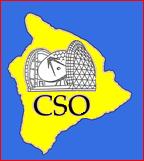NIGHT and DAY
Walter R. Steiger
|

| |
|
Some people say they can tell time by the Sun,
This dissertation attempts to describe and explain the various kinds of time used in astronomical as well as civil affairs, and to elucidate the relations among them. Practical applications include definitions and computations of twilight, sunrise, and sunset, among others, as well as their seasonal and geographical variations. Almost all the flora and fauna of the Earth are light dependent, and many of the foraging animal species have developed visual ability under very feeble illumination . While the Sun is the the primary luminary of the Earth, there are other natural sources that provide enough light to accommodate some creatures. The full Moon is about one twenty-four thousandths as bright as the Sun, but the human eye can accommodate to that reduced light to permit one to read under a full Moon. When the Moon is not present, some light is provided by the stars, and even the upper atmosphere itself glows faintly at night. This airglow phenomenon has been observed and photographed by astronauts as a thin luminescence gracing the dark curve of the Earth where there was no solar illumination. Many of the wonders of nature are beyond the appreciation of most of us, immersed as we are in the cocoon of civilization. |
||